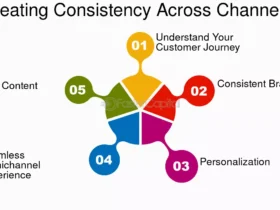Finding the perfect office space for your business doesn’t have to be too expensive. The first step in keeping your expenses down is to know that the right location and lease terms are very important for managing your rental costs. By being smart about your search and being open to flexible choices, you can build a good work environment for your team while staying within your budget.
Understanding Office Space Needs
Before you look at listings, take a moment to think about your office space needs. This step is important. It can help you save money and find a workspace that matches your business goals.
Think about how many team members you have, how they work, and your plans for growth. Do you need separate desks, shared spaces, or a combination of both? Figuring this out will help you search better and find the right options for your team.
Assessing Your Business’s Size and Needs
Understanding how your business is growing is very important. If you are a small business expecting quick growth, planning for future space needs is vital. Think about getting a slightly bigger space than you need now. This can help you grow internally before you have to move to a new location.
Also, for small businesses that plan moderate growth, matching your office space to your needs is key to saving money. For instance, if your team does well when they work together, focus on shared work areas and conference rooms instead of separate offices.
By carefully looking at your current and future space needs, you can work out a lease agreement that helps your business grow without extra financial stress.
Calculating Required Space for Efficiency
Once you see what your ideal workspace looks like, turn those needs into the right amount of space. Start by figuring out the best size for each employee or team. Think about things like desk space, storage, and how people move around the workspace.
Then, look at how much space you need for shared areas, such as meeting rooms, break rooms, and common areas. It’s important to balance personal workspaces with areas for teamwork to keep things working well and make employees happy.
Keep in mind, using space well can help lower your rental costs. By planning your layout and using space-saving furniture and equipment, you can cut down on the square footage you need and may save on rent.
Exploring Cost-Effective Locations
Prime locations in busy city centers can be very appealing, but they can be very expensive. To find better rental rates, look into areas outside the main business districts.
Neighborhoods that are a bit farther away often provide lower rates while still being easy to reach and having good services. These places can also give a quieter work environment for your team.
For instance, if you’re looking to balance cost and convenience, there are many offices to let in Boksburg that offer affordable rent without sacrificing accessibility. Boksburg is well-connected, with access to major roads and transport routes, making it a practical choice for budget-conscious businesses..
Benefits of Non-Prime Locations
Choosing non-prime locations can save a lot on rent. You can use those savings for other important parts of your business. Lower real estate costs in these spots usually mean cheaper rent. This gives you more financial room to breathe.
Also, exploring places outside the city center can help you find unique and inspiring workspaces. You can discover everything from converted lofts to renovated industrial buildings. These alternative spots often have special character and charm. This can spark creativity and innovation in your team.
If having easy access to public transport and amenities matters to you, many non-prime locations provide these. Look for areas that have good public transport links, nearby restaurants and cafes, and important services close by.
Beginner’s Guide to Renting Office Space
Finding office rentals for the first time can be challenging. However, with some preparation and guidance, the process can go smoothly. Knowing the important steps helps you make smart decisions and get the best deal for your workspace.
Start by setting a realistic budget. Then, pay close attention to lease terms. By having the right knowledge, you will have a good rental experience.
What You Need to Get Started
Before you start looking for an office, it’s important to get your documents and financial details ready. Having these on hand will make the application process faster. It will also show landlords that you are a serious tenant.
First, gather your business registration papers, financial statements, and bank references. Landlords usually need these to see if you are financially stable and can keep up with rent payments. Knowing your credit score is important too, as it affects your chances of getting approved for a lease.
Also, be ready to share what kind of lease term you want, how much space you need, and any special features you would like. This will help landlords and property managers understand if they can meet your needs.
Step-by-Step Guide to Renting Office Space
The first step to finding your ideal office space is to create clear search criteria. Think about what is important to you, like location, square footage, and budget limits. This will help you focus on the right options and avoid wasting time on places that don’t fit.
The next step is to look for available office spaces. You can use online real estate sites, talk to commercial real estate agents, and reach out to your network for leads.
Don’t hesitate to:
- Schedule viewings for properties that interest you.
- Note the condition of the space, the amenities available, and the surrounding area.
Remember, finding the best deal requires good research and careful thought.
Step 1: Identify Your Budget
Before you start looking for an office space, set a budget that works for you. Think about more than just the rent. You also need to consider other costs like utilities, maintenance fees, and possible fit-out costs.
Staying within your budget is important. If you go over it, your business might face financial risks, especially when it is just starting out. You could save money by choosing a smaller space or a place with lower rent.
By creating a clear budget and sticking to it, you will make wise financial choices. This way, you can find an office space that helps your business stay strong in the long run.
Step 2: Evaluate Lease Terms
When you think about office space, checking lease terms is very important. Find flexible terms that fit your business growth. Knowing lease agreements can help you save money. Look at the square footage you need for your team members, meeting rooms, and breakout areas. Negotiate for smaller spaces that suit your needs. Think about flexible leases for future needs. By carefully looking at lease terms, you can get the best deal and keep your business financially stable. Make smart choices to reduce financial risks and increase cost savings.
Negotiation Strategies for Lower Rent
Getting good lease terms is very important to get the best deal for your office space. Make sure to have honest talks with landlords or property managers.
Keep in mind, rental rates can usually be negotiated. So, be ready with research about the market and know your budget limits.
Key Points to Negotiate in a Lease
When you negotiate lease terms, pay attention to important areas that can help you get better deals and save money. First, think about asking for a lower base rent. In a competitive market, landlords might agree to lower rental rates to keep a tenant.
Flexible terms, like shorter lease lengths or options to sublet, give your business more flexibility and can be strong points during negotiations.
Also, don’t forget to negotiate good terms for rent increases. Asking for capped yearly increases or a rent-free period can help you manage your costs better in the future.
How to Leverage Market Conditions
In today’s competitive market, knowing the latest real estate trends can help you. Look up vacancy rates in the areas you want to explore. Check out recent lease transactions to understand what the rental rates are like.
If you are in a market where tenants have the upper hand, meaning there are a lot of vacancies, landlords may be open to negotiation. Use this information to your advantage when talking about lease terms and rental rates.
Keep in mind that getting the best deal takes a smart plan and a readiness to negotiate.
Conclusion
When you want to save money on office space, planning is very important. Knowing what your business needs and looking at cheaper locations can really affect your finances. By checking your budget, looking at lease terms, and understanding market conditions, you can negotiate a lower rent. Keep in mind, the right office space is not just about being cheap. It also needs to meet your business needs. With careful planning, you can find an office that fits your needs and doesn’t cost too much. Start your search for an affordable office space solution now!







Leave a Reply